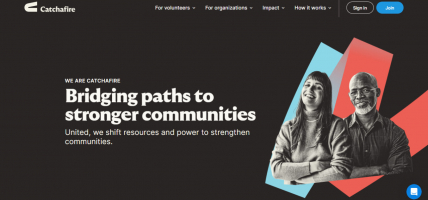Top 10 Best Analytical Essay Topics for High School
Analytical essays are essential tools in high school education, fostering critical thinking and in-depth analysis among students. "Top 10 Best Analytical Essay ... read more...Topics for High School" presents a range of topics that are both engaging and intellectually stimulating for young minds.
-
Climate change represents one of the most pressing challenges of our time, with far-reaching implications for future generations. This essay delves into the multifaceted impact of climate change. It considers environmental, social, and economic consequences on the lives of those who will inhabit our planet in the coming decades.
The environmental implications of climate change are perhaps the most apparent and alarming. Rising global temperatures, attributed to increased greenhouse gas emissions, are causing a cascade of ecological effects. These include the melting of polar ice caps, rising sea levels, and more frequent and severe weather events such as hurricanes, droughts, and wildfires. The Intergovernmental Panel on Climate Change (IPCC) warns that these changes are likely to lead to significant biodiversity loss and disruptions in ecosystems. They affect the natural resources future generations depend on (IPCC, 2021).
Socially, climate change poses a substantial threat to human health and safety. The World Health Organization (WHO) has highlighted that climate change is expected to cause approximately 250,000 additional deaths per year between 2030 and 2050 due to malnutrition, malaria, diarrhea, and heat stress. This public health crisis will disproportionately affect the most vulnerable populations. It’s particularly in developing countries, exacerbating global inequalities (World Health Organization, 2018).
Economically, the impacts of climate change are profound. The changing climate is expected to disrupt agricultural production, reduce freshwater availability, and damage infrastructure. This disruption poses a significant threat to global economic stability and development. A report by the National Bureau of Economic Research suggests that if current trends continue, global GDP per capita could decrease by more than 7% by 2100 due to climate change (National Bureau of Economic Research, 2020).
In conclusion, the implications of climate change for future generations are vast and multidimensional. They encompass environmental degradation, health risks, social inequalities, and economic challenges. Addressing these issues requires immediate and concerted global action to reduce greenhouse gas emissions and implement adaptation strategies. The future health and prosperity of our planet and its inhabitants depend on the decisions and actions taken today.
References
- Intergovernmental Panel on Climate Change. (2021). Climate Change 2021: The Physical Science Basis. https://www.ipcc.ch/report/ar6/wg1/
- World Health Organization. (2018). Climate change and health. https://www.who.int/news-room/fact-sheets/detail/climate-change-and-health
- National Bureau of Economic Research. (2020). Long-Term Macroeconomic Effects of Climate Change: A Cross-Country Analysis. https://www.nber.org/papers/w26167
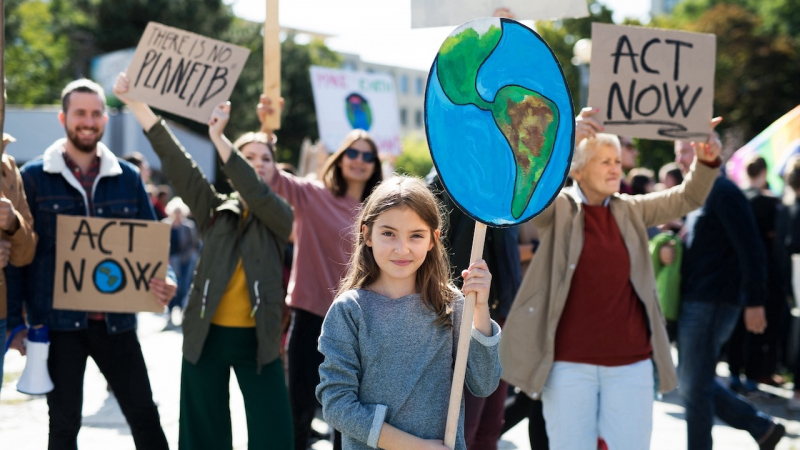
Photo by Shutterstock on shutterstock.com https://www.evosportscollective.com/blog/young-minds-solving-climate-change 
Photo on freepik https://pl.freepik.com/darmowe-zdjecie/zmiana-klimatu-z-sucha-gleba_21248833.htm -
The rapid advancement of technology has dramatically transformed modern education, revolutionizing how learning is facilitated and accessed. This essay examines the multifaceted impact of technology on education with its benefits and challenges.
One of the most significant benefits of technology in education is the increased accessibility to information and learning resources. The internet, educational apps, and online databases have made a vast array of knowledge readily available to students from diverse backgrounds. Platforms like Khan Academy offer free educational resources. That makes learning more accessible to students who might not have these resources locally. The National Center for Education Statistics reports that 94% of children ages 3 to 18 had computer access at home in 2015, demonstrating the widespread availability of digital tools for learning (National Center for Education Statistics, 2017).
In addition, technology has also facilitated personalized learning experiences. Educational software and online resources can adapt to individual student's learning paces and styles, allowing for more personalized education. This adaptability is particularly beneficial in addressing the diverse needs of students, including those with learning disabilities. The International Society for Technology in Education (ISTE) emphasizes the role of technology in personalizing student learning and providing equitable access to educational resources (ISTE, 2017).
However, the integration of technology in education is not without its challenges. One significant concern is the digital divide - the gap between those who have access to modern information and communication technology and those who do not. This divide can exacerbate existing educational inequalities. The UNESCO report on 'Education For All 2000-2015' highlights that despite progress, disparities in access to educational technology still exist, especially in developing countries (UNESCO, 2015).
Another challenge is ensuring that technology does not replace essential interpersonal aspects of learning. While technology can enhance the learning experience, it cannot replicate the social interactions and personal connections that are part of traditional classroom learning. This balance is crucial for developing communication and social skills in students.
In conclusion, technology has undeniably transformed modern education, offering remarkable benefits in terms of accessibility and personalized learning. However, it is essential to address the challenges, such as the digital divide and the potential loss of interpersonal aspects of learning. The goal should be to integrate technology in a way that enhances, rather than replaces, traditional educational methods.
References
- National Center for Education Statistics. (2017). Digest of Education Statistics. https://nces.ed.gov/programs/digest/d17/tables/dt17_702.60.asp
- International Society for Technology in Education. (2017). ISTE Standards for Students. https://www.iste.org/standards/for-students
- UNESCO. (2015). Education For All 2000-2015: Achievements and Challenges. https://unesdoc.unesco.org/ark:/48223/pf0000232565

Photo by Ground Picture on shutterstock.com https://base.education/ai-technology-and-education/ 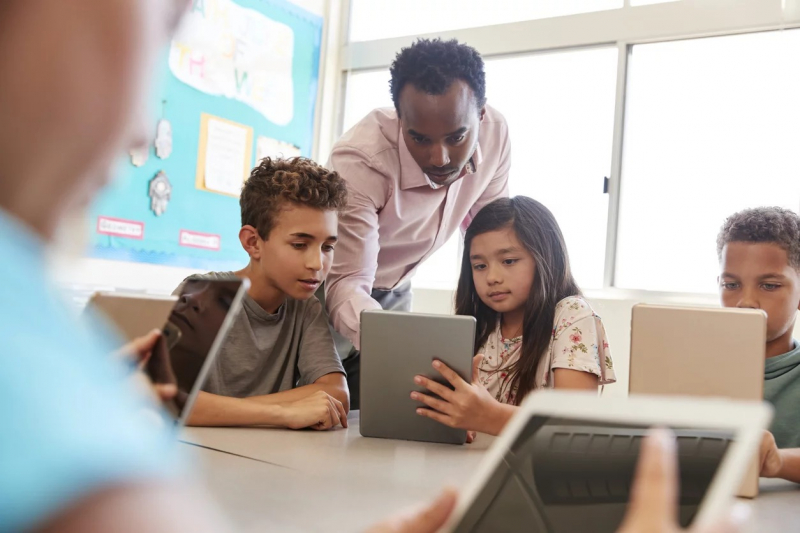
Photo by monkeybusinessimages on istockphoto.com https://tenneyschool.com/3-healthy-ways-using-technology-enhance-education/ -
Social media has significantly reshaped youth culture, affecting various aspects of young people's lives. This essay analyzes the profound impact social media has on the cultural, social, and psychological dimensions of today's youth. It serves as both a tool for positive change and a platform with potentially negative consequences.
At its best, social media promotes creativity and connectivity. Young people use platforms like Instagram, TikTok, and YouTube to express their creativity, showcase their talents, and share their experiences. This digital expression has democratized content creation, enabling anyone with a smartphone to become a content creator. According to the Pew Research Center, 45% of American teens say that social media has a positive effect on their lives. Itis primarily due to the opportunities for self-expression and community building (Pew Research Center, 2018).
Moreover, social media has redefined how young people communicate and interact. It breaks down geographical barriers, allowing youth to connect with peers across the globe. This exposure to diverse cultures and ideas fosters a sense of global community and understanding. A report by Common Sense Media reveals that more than half of American teenagers have made new friends online. The number illustrates social media's role in expanding social networks beyond physical boundaries (Common Sense Media, 2019).
However, the influence of social media is not solely positive. It also presents challenges, particularly concerning self-image and mental health. The constant exposure to curated images and lifestyles can lead to unhealthy comparisons, affecting teenagers' body image and self-esteem. The American Academy of Pediatrics has raised concerns about the impact of social media on the mental health of young individuals. It can contribute to anxiety and depression (American Academy of Pediatrics, 2017).
Another significant issue is the spread of misinformation. Young people, who often rely on social media for news, can struggle to differentiate between credible information and fake news. A study by the Stanford History Education Group found that a majority of students couldn't identify the credibility of news sources on social media. That highlights the need for better digital literacy education (Stanford History Education Group, 2016).
In conclusion, social media's influence on youth culture is multifaceted. It offers platforms for creative expression and global connectivity while also posing risks related to mental health and misinformation. Navigating this digital landscape requires critical thinking and media literacy.
References
- Common Sense Media. (2019). The Common Sense Census: Media Use by Tweens and Teens. https://www.commonsensemedia.org/research/the-common-sense-census-media-use-by-tweens-and-teens-2019
- Pew Research Center. (2018). Teens, Social Media & Technology 2018. https://www.pewresearch.org/internet/2018/05/31/teens-social-media-technology-2018/
- American Academy of Pediatrics. (2017). Media and Young Minds. Pediatrics, 138(5). https://doi.org/10.1542/peds.2016-2591
- Stanford History Education Group. (2016). Evaluating Information: The Cornerstone of Civic Online Reasoning. https://sheg.stanford.edu/upload/V3LessonPlans/Executive%20Summary%2011.21.16.pdf
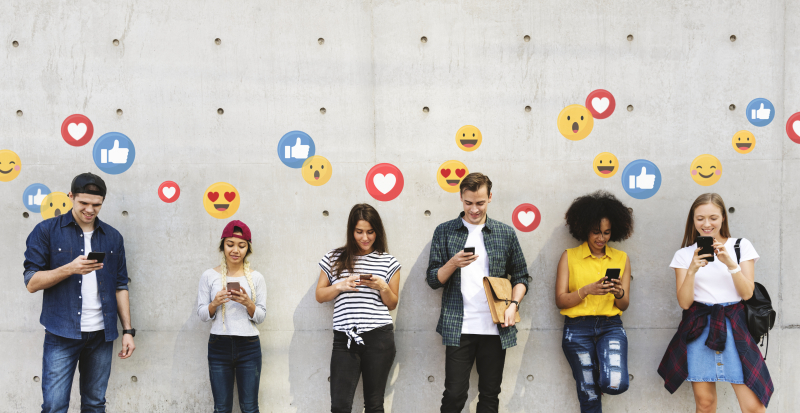
Photo on rawpixel.com https://tametheteen.com/are-your-teens-communication-problems-due-to-social-media/ 
Photo by tommaso79 on shutterstock.com https://www.governmentevents.co.uk/ge-insights/impact-social-media-young-people-mental-health/ -
The evolution of music genres over time is not just a reflection of changes in artistic tastes but also a mirror of the broader cultural shifts in society. This essay explores the cultural evolution of music genres, focusing on how societal changes influence musical expression and vice versa.
Historically, music has always been a medium reflecting the zeitgeist of its era. For example, the rise of jazz in the early 20th century paralleled significant social changes. They included the Harlem Renaissance and the advent of the civil rights movement. Jazz, with its improvisational nature and roots in African American communities, represented a break from traditional European music. It symbolizes a broader societal shift towards greater cultural diversity and expression. A study by the Smithsonian Institution encapsulates jazz as "America's classical music," highlighting its role in influencing cultural and social dynamics (Smithsonian Institution, 2021).
The 1960s and 1970s saw the rise of rock and roll, closely linked with the counterculture movement. Bands like The Beatles and The Rolling Stones transformed music aesthetically and resonated with the youth's growing disillusionment with established norms. They challenge social conventions. The University of Rochester's analysis of rock music emphasizes its role in the social revolutions of the 1960s (University of Rochester, 2018). It reflects and encourages societal changes.
In recent decades, the proliferation of digital technology has profoundly impacted music genres. The rise of hip-hop and electronic dance music (EDM) illustrates how technological advancements have created new soundscapes. Hip-hop, originating from urban African American communities, used technology to craft a new genre that speaks to issues of racial inequality, poverty, and urban life. Similarly, EDM, with its synthesized beats, represents the digital age's influence on music. The Berklee College of Music discusses the evolution of these genres as a response to technological advancements and changing urban landscapes (Berklee College of Music, 2020).
In conclusion, the evolution of music genres is deeply intertwined with cultural and societal changes. From jazz to rock and roll and from hip-hop to EDM, each genre not only reflects the prevailing cultural milieu but also influences and shapes societal norms and values. Understanding the cultural evolution of music offers insights into the complex relationship between art and society.
References
- Smithsonian Institution. (2021). Jazz: America's Classical Music. https://www.si.edu/spotlight/jazz-america
- University of Rochester. (2018). The Social Impact of Rock Music. https://www.rochester.edu/newscenter/the-social-impact-of-rock-music-402282/
- Berklee College of Music. (2020). The Evolution of Music Genres. https://www.berklee.edu/news/berklee-now/evolution-music-genres

Photo by Nutthaseth Vanchaichana on istockphoto.com https://www.discoverruidoso.com/info/explore-ruidosos-live-music-scene 
Photo by Melinda Nagy on shutterstock.com https://www.explore.com/1337134/best-music-festivals-usa/ -
Modern cinema has often taken up the task of portraying teenage life. It offers a lens through which society can view adolescents' joys, struggles, and complexities. This essay explores the portrayal of teenage life in modern cinema, analyzing how these portrayals reflect and sometimes shape societal perceptions of adolescence.
One significant aspect of teenage life in cinema is exploring identity and self-discovery. Movies like "The Breakfast Club" and "Lady Bird" are celebrated for their in-depth characterization and realistic depiction of teenagers' internal struggles. These films address the complexities of family dynamics, peer pressure, and the search for individuality. These films are lauded for their realistic and empathetic depiction of the teenage experience. They resonate with both adolescent and adult audiences.
However, not all cinematic portrayals of teenagers are equally nuanced. Some movies tend to oversimplify the teenage experience. They focus solely on themes like popularity, physical appearance, or partying and fail to capture the diverse realities of teenage life. This can lead to a skewed representation, where the diversity and complexity of real-life teenage experiences are overlooked. A report by the Geena Davis Institute on Gender in Media highlights that teen films often fail to adequately represent the racial, cultural, and social diversity of the teenage population (Geena Davis Institute on Gender in Media, 2019).
The influence of these portrayals on societal perceptions of teenagers cannot be understated. Cinema, as a powerful cultural medium, shapes and reinforces societal norms and expectations. Accurate and diverse representations are crucial for fostering a more comprehensive understanding of adolescence. The American Psychological Association emphasizes the importance of media portrayals in shaping adolescents' self-image and societal attitudes toward them (American Psychological Association, 2019).
Another critical aspect is the portrayal of teenage mental health issues in cinema. Films that address these issues with sensitivity and depth can play a significant role in destigmatizing mental health challenges among teenagers. Conversely, superficial or inaccurate portrayals can reinforce harmful stereotypes and misunderstandings about mental health.
In conclusion, while modern cinema has made strides in portraying the complexities of teenage life, there is still room for improvement in terms of diversity and depth. As cinema continues to evolve, it holds the potential to shape and reflect the multifaceted nature of being a teenager in the modern world.
References
- Geena Davis Institute on Gender in Media. (2019). See Jane Report 2019. https://seejane.org/research-informs-empowers/see-jane-2019/
- American Psychological Association. (2018). The Impact of Media Portrayals of Children and Adolescents.

Photo by Chris Ryan on gettyimages.com https://greatergood.berkeley.edu/article/item/what_stories_do_teens_want_to_see_in_movies_and_tv 
Photo by FG Trade on gettyimages.com https://deadline.com/2023/10/ucla-study-teens-sex-romance-tv-movies-1235579579/ -
The dynamic relationship between competitive sports and adolescent psychology is both intricate and significant. This essay delves deeply into the psychological impacts of sports on adolescents, exploring how these activities shape their mental and emotional development.
Firstly, sports participation often leads to enhanced self-esteem and confidence in adolescents. Young athletes develop a sense of accomplishment through achieving goals and improving skills. This sense of achievement is crucial during adolescence, a search for identity and self-worth. A study in the Journal of Youth and Adolescence indicates that adolescents involved in sports report higher self-esteem and happiness than those not engaged in sports (Journal of Youth and Adolescence, 2017). This boost in self-esteem is particularly significant as it lays the foundation for a positive self-concept in adulthood.
Moreover, competitive sports can instill valuable life skills such as discipline, resilience, and teamwork. The structured nature of sports requires adolescents to practice regularly, adhere to rules, and work towards long-term goals. All of them foster a strong work ethic and discipline. Additionally, overcoming challenges and failures in sports teaches resilience. A report by the Aspen Institute discusses how sports participation helps adolescents develop coping strategies to manage setbacks, a skill transferable to other life areas (Aspen Institute, 2019).
However, the pressure to perform and win in competitive sports can also have negative psychological impacts on adolescents. The emphasis on achievement and success may lead to stress, anxiety, and burnout. The American Academy of Pediatrics warns about the risks of over-specialization in one sport at a young age, which can lead to increased stress and a higher likelihood of injury (American Academy of Pediatrics, 2016).
Additionally, the fear of failure and the high expectations from coaches, parents, and peers can lead to a range of mental health issues. Adolescents in highly competitive sports environments may experience performance anxiety, decreased motivation, and even depression when they perceive their performance as inadequate. The Journal of Applied School Psychology published findings that young athletes who perceive high pressure from parents or coaches are more likely to experience anxiety and burnout (Sutcliffe et al., 2021).
In conclusion, competitive sports significantly impact adolescent psychology. While they offer numerous benefits like enhanced self-esteem, resilience, and life skills, they can also introduce psychological stressors. Balancing the positive aspects with the potential challenges is crucial.
References
- Journal of Youth and Adolescence. (2017). Sports Participation and Happiness: Evidence from US Microdata. https://doi.org/10.1016/j.joep.2012.02.007
- Aspen Institute. (2019). Calls for Coaches: Coaching Social and Emotional Skills in Youth Sports. https://www.aspeninstitute.org/publications/calls-for-coaches/
- American Academy of Pediatrics. (2016). Sports Specialization and Intensive Training in Young Athletes. https://pediatrics.aappublications.org/content/138/3/e20162148
- Sutcliffe, J. T., Kelly, P. J., & Vella, S. A. (2021). Youth sport participation and parental mental health. Psychology of Sport and Exercise, 52, 101832.
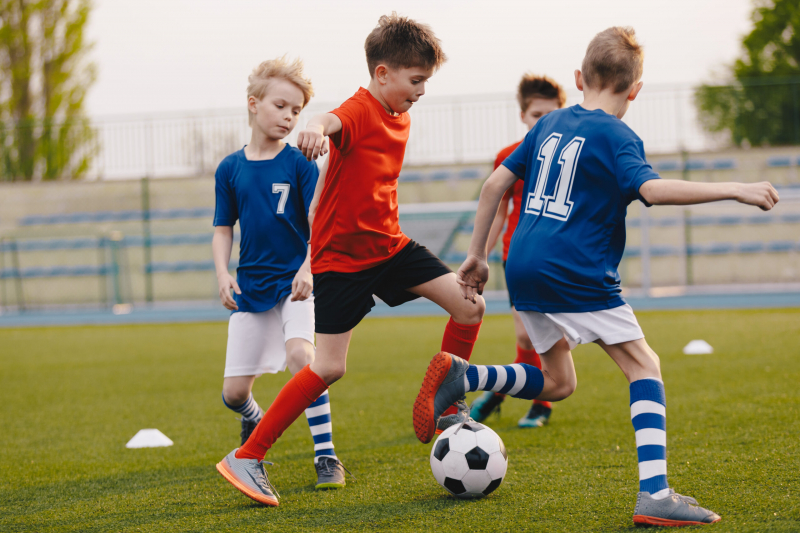
Photo by matimix on istockphoto.com https://www.raisingarizonakids.com/2022/09/5-mental-health-benefits-of-youth-sports/ 
Photo by Lighteffect on Westend61 https://www.westend61.de/en/photo/LEF000121/two-young-men-playing-basketball-on-an-outdoor-court -
The advent of Artificial Intelligence (AI) presents a paradigm shift with profound moral implications in our society. This essay delves into the ethical landscape of AI, exploring its transformative impact on healthcare, societal biases, and employment.
AI's integration into healthcare epitomizes its potential for human benefit. By leveraging AI's advanced analytical capabilities, medical professionals can diagnose diseases more accurately and efficiently. For instance, AI's ability to analyze complex medical data rapidly has led to breakthroughs in early cancer detection. However, this shift raises ethical questions about the diminishing role of human judgment in medical decision-making and the reliability of AI in life-critical scenarios.
One of the most contentious issues surrounding AI is its propensity to perpetuate and amplify societal biases. AI algorithms, driven by data, can inherit and reinforce existing prejudices in the data they are trained on. This is particularly concerning in the criminal justice and recruitment sectors, where biased algorithms can lead to unfair outcomes. The Massachusetts Institute of Technology identified significant biases in commercial facial recognition software. It highlights the need for stringent measures to mitigate bias in AI systems (Massachusetts Institute of Technology, 2018).
The impact of AI on employment and the global economy is another area of moral concern. AI systems could replace human workers in various sectors as they become increasingly capable. That leads to job displacement and wider economic inequalities. The McKinsey Global Institute estimates that up to 30% of the global workforce could be displaced by 2030 due to AI and automation (McKinsey Global Institute, 2017). This potential for widespread job loss underscores the need for policies to manage the transition in the labor market and support those affected.
In conclusion, while AI presents significant advancements, it also introduces complex ethical challenges that must be addressed. The development of AI must be guided by robust ethical frameworks that consider the implications for healthcare, societal equity, and the global workforce.
References
- Massachusetts Institute of Technology. (2018). Study Finds Gender and Skin-Type Bias in Commercial Artificial-Intelligence Systems. http://news.mit.edu/2018/study-finds-gender-skin-type-bias-artificial-intelligence-systems-0212
- McKinsey Global Institute. (2017). Jobs Lost, Jobs Gained: Workforce Transitions in a Time of Automation. https://www.mckinsey.com/featured-insights/future-of-work/jobs-lost-jobs-gained-what-the-future-of-work-will-mean-for-jobs-skills-and-wages
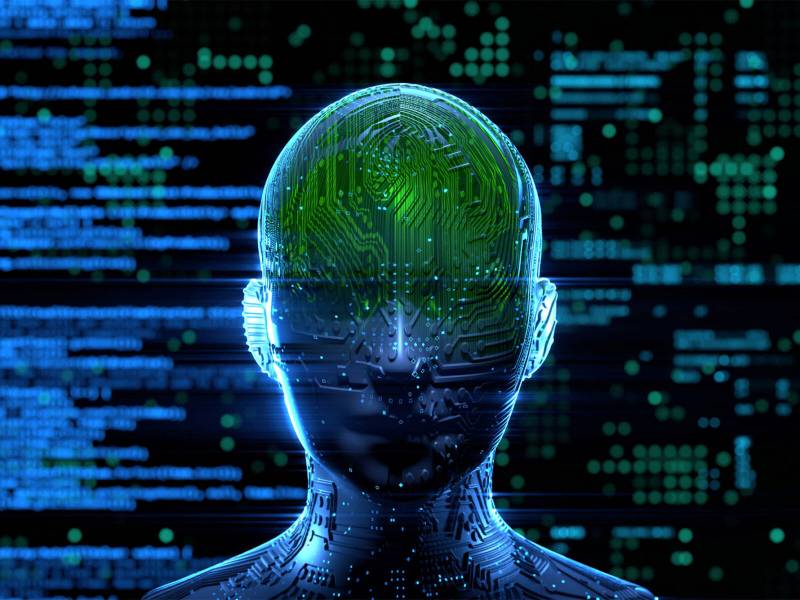
Photo by Just_Super on istockphoto.com https://www.bu.edu/articles/2023/its-time-to-pause-artificial-intelligence/ 
Photo by Shutter2U on istockphoto.com https://connectedworld.com/the-rise-of-artificial-intelligence-and-its-impact-on-work/ -
The fall of the Berlin Wall in 1989 marked a pivotal moment in global politics. This essay examines how it reshaped international relations, impacted global ideologies, and influenced subsequent conflicts and unifications.
The immediate aftermath of the fall of the Berlin Wall was the acceleration of the end of the Cold War. For decades, the Wall had stood as a stark symbol of the divide between the communist East and the capitalist West. Its demolition symbolized the weakening of Soviet influence in Eastern Europe. It led to the dissolution of the Soviet Union in 1991. This dissolution reshaped global power dynamics, effectively ending the bipolar world order dominated by the United States and the Soviet Union. Historians like John Lewis Gaddis have argued that this event marked a significant shift in international relations. It transitioned the world towards a unipolar system with the United States as the sole superpower (Gaddis, 1992).
Furthermore, the fall of the Berlin Wall profoundly impacted global ideologies. It discredited the viability of authoritarian communism as a governing ideology. Therefore, it led to a widespread embrace of democracy and free-market capitalism. This ideological shift was not limited to Europe but was felt worldwide, from Latin America to Africa and Asia. Political scientist Francis Fukuyama famously declared this event as the "end of history." It signifies the triumph of liberal democracy as the ultimate form of human government (Fukuyama, 1992).
The event also had far-reaching implications for regional conflicts and unifications. The power vacuum left by the Soviet Union's collapse led to the emergence of new nationalistic movements and conflicts, particularly in Eastern Europe and Central Asia. Conversely, it also facilitated Germany's unification and the European Union's expansion. The event fostered greater European integration.
In conclusion, the fall of the Berlin Wall was a transformative event with profound and lasting impacts on global politics. It catalyzed the end of the Cold War, led to a shift in global ideologies, and influenced various geopolitical developments. Its legacy continues to shape international relations.
References
- Gaddis, J. L. (1992). The United States and the End of the Cold War: Implications, Reconsiderations, Provocations. New York: Oxford University Press.
- Fukuyama, F. (1992). The End of History and the Last Man. New York: Free Press.

Photo by Thomas Imo on gettyimages.com https://moneyweek.com/412986/9-november-1989-the-fall-of-the-berlin-wall 
Photo on Wallpapers.com https://wallpapers.com/wallpapers/the-fall-of-berlin-wall-in-1989-rrwpc3hvenskzutl.html -
Advertising has long been a powerful force in shaping consumer behavior, with its impact on teenagers being particularly significant. This essay analyzes the influence of advertising on teen consumerism, examining how it shapes purchasing habits, affects self-image, and promotes materialism.
Advertising strategically targets teenagers, recognizing them as a key consumer demographic. Companies use various platforms, especially social media, to reach young audiences. These advertisements often showcase idealized lifestyles and images, which can influence teens' purchasing decisions. According to a report by the American Psychological Association, teenagers are highly susceptible to advertising, with brand preferences being formed in early adolescence and solidified by teen years (American Psychological Association, 2017). This highlights the potent influence of advertising in shaping teen consumer behavior.
Beyond influencing purchasing decisions, advertising impacts teenagers' self-image and values. Advertisements often portray unrealistic standards of beauty and success. It can affect teens' self-esteem and body image. The pressure to conform to these standards can lead to excessive spending on products that promise to help achieve these idealized images. A study by the National Association for Media Literacy Education discussed how advertising promotes materialistic values among teenagers. It links self-worth and success to product ownership (National Association for Media Literacy Education, 2019).
Moreover, advertising promotes a culture of materialism among teenagers. It often equates happiness and social status with product ownership, creating a consumerist mindset. This can lead to impulsive and excessive spending. Since teenagers strive to keep up with trends and peer expectations. A survey by the Consumer Financial Protection Bureau found that teenagers influenced by advertising are more likely to make impulsive purchases without considering long-term financial consequences (Consumer Financial Protection Bureau, 2018).
In conclusion, advertising exerts a significant influence on teen consumerism. It shapes purchasing habits, affects self-esteem and body image, and promotes materialistic values. There is a need for educational initiatives that teach media literacy, helping teenagers understand and critically evaluate advertising messages.
References
- American Psychological Association. (2017). Report on the Sexualization of Girls. https://www.apa.org/pi/women/programs/girls/report
- National Association for Media Literacy Education. (2019). The Impact of Advertising on Teenagers. https://namle.net/publications/media-literacy-definitions/
- Consumer Financial Protection Bureau. (2022). CFPB Report Finds Household Financial Health is Declining after Several Years of Increased Savings. https://www.consumerfinance.gov/about-us/newsroom/cfpb-report-finds-household-financial-health-is-declining-after-several-years-of-increased-savings/

Photo on freepik https://www.freepik.com/premium-photo/sale-shopping-consumerism-people-concept-happy-young-woman-choosing-buying-food-market_29271259.htm 
Photo by Oscar Wong on gettyimages.com https://time.com/6200717/online-shopping-psychology-explained/ -
Jane Austen's "Pride and Prejudice" novel intricately explores the themes of social hierarchies and prejudice in 19th-century England. This essay delves into how Austen uses her narrative to critique the rigid social structures and the prejudices they engender, focusing on class distinctions, marriage, and the characters' personal development.
At its core, "Pride and Prejudice" is a keen observation of the class system prevalent in early 19th-century British society. The novel highlights how social status and wealth significantly influence individual prospects, particularly in marriage. The Bennet sisters' experiences reflect the societal pressure to secure marriages that can ensure financial security and social advancement. Austen skillfully illustrates the absurdities and injustices of this system through characters like Mr. Collins, who represents the obsequiousness and mercenary attitudes fostered by such social structures.
Prejudice, as depicted in the novel, is closely tied to these social hierarchies. Characters like Elizabeth Bennet and Mr. Darcy are initially blinded by their prejudices. In particular, Elizabeth's against Darcy's high social standing and perceived arrogance, and Darcy's against Elizabeth's lower social rank. Austen uses their gradual realization and overcoming of these prejudices as a vehicle to critique the societal norms that foster such biases. Literary critic Mary Poovey emphasizes how Austen's portrayal of Elizabeth challenges the conventional social norms of her time. It represents a progressive view of women's role in society (Poovey, 1984).
Furthermore, Austen addresses the theme of prejudice not just in romantic contexts but also in broader social interactions. The novel showcases various forms of prejudice, from class-based snobbery to gender biases. The character development of Elizabeth and Darcy illustrates the possibility of overcoming such prejudices through personal growth and reflection.
In conclusion, "Pride and Prejudice" explores social hierarchies and prejudice in early 19th-century England. Austen's critique of these social structures and the biases they perpetuate is conveyed through her characters' experiences and development. The novel remains a significant literary work for its insightful commentary on the social dynamics of its time, which continues to resonate with modern audiences.
References
- Poovey, M. (1984). The Proper Lady and the Woman Writer: Ideology as Style in the Works of Mary Wollstonecraft, Mary Shelley, and Jane Austen. Chicago: University of Chicago Press.

Photo on Wallpapers.com https://wallpapers.com/pride-and-prejudice-pictures 
Photo on Wallpapers.com https://wallpapers.com/pride-and-prejudice-pictures - Poovey, M. (1984). The Proper Lady and the Woman Writer: Ideology as Style in the Works of Mary Wollstonecraft, Mary Shelley, and Jane Austen. Chicago: University of Chicago Press.



























